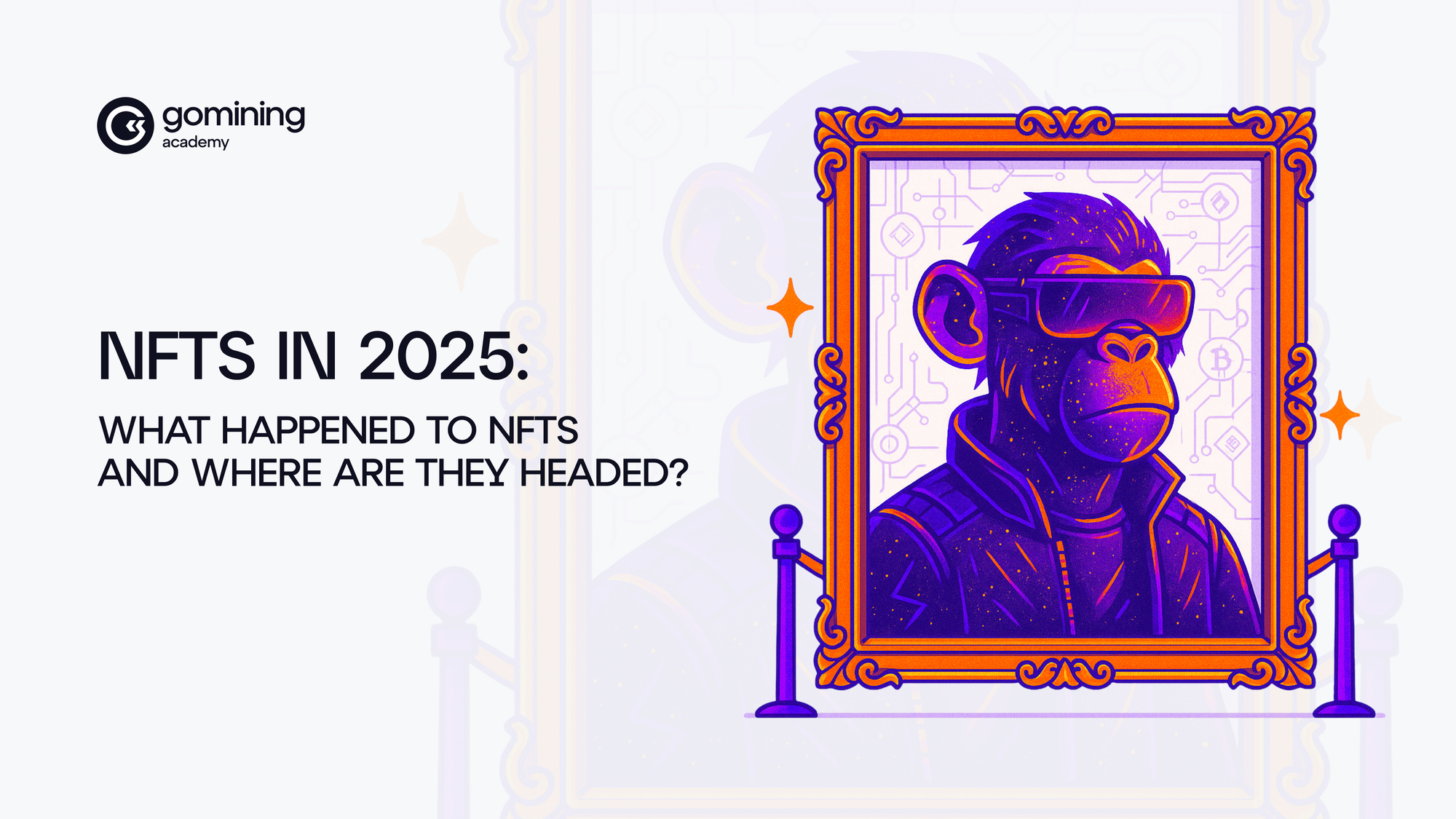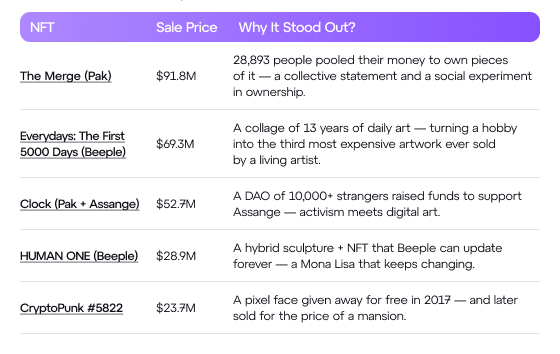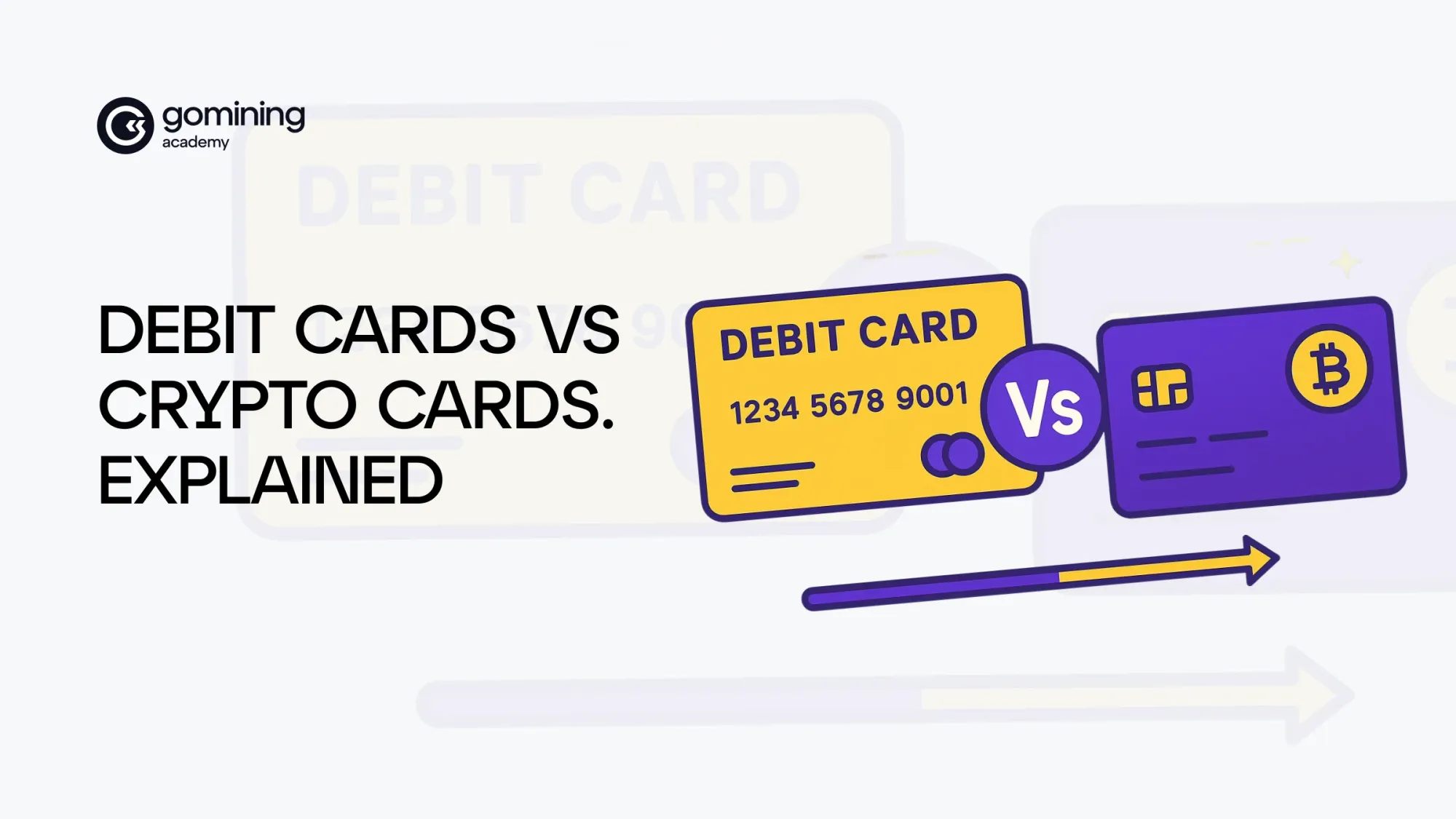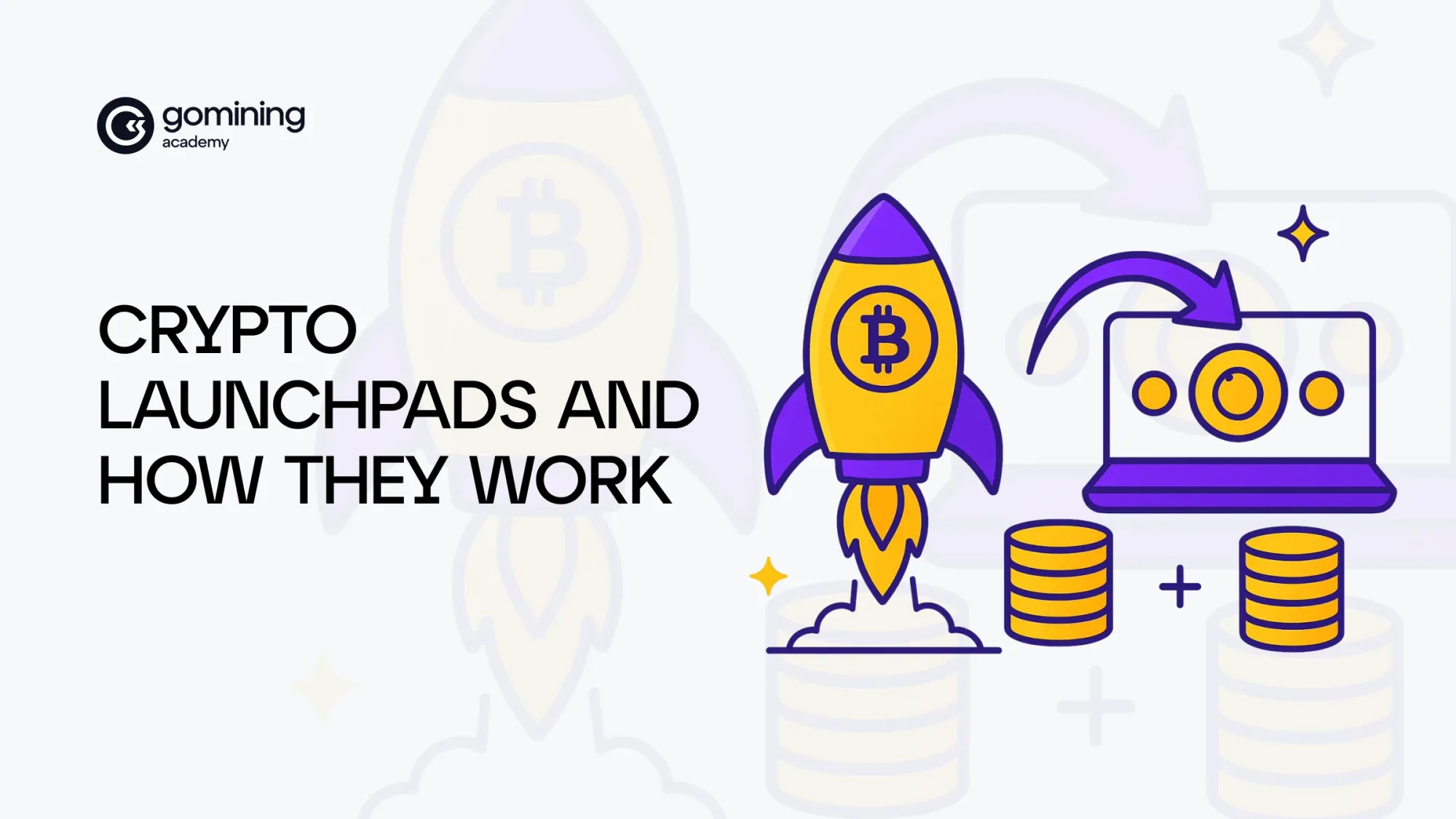NFTs in 2025: What Happened to NFTs and Where Are They Headed?

Do you know what a song, a meme, or even a virtual sword in a game have in common?
They’re digital. You can share them, download them, and screenshot them — but for most of the Internet’s history, you couldn’t truly own them in a way that meant something.
That’s where Non-Fungible Tokens, or NFTs, came in, promising a way to claim ownership over a piece of the internet. Art, music, collectibles, game items — things that could now be yours, provable and permanent, thanks to blockchain tech.
Can you imagine what that meant for creators and collectors around the world? New ways to get paid. Status. Belonging. A stake in Internet culture. The promise was clear: own what you love, prove it to the world — and for a while, that promise felt unstoppable.
So it wasn’t about the tech, after all? You might ask. What happened to NFTs? And why did the excitement fade for so many?
In this piece, we’ll break it down: what is an NFT, its rise, fall, and where NFTs might be headed next. Along the way, you might just rethink what digital ownership really means.
Table of Contents
- What Are NFTs, What Are They Used For — and Why Did They Boom?
- The NFT Market Crash: What Happened to NFT Popularity?
- Are NFTs Still Valuable — Dead, or Just Evolved?
- Will NFTs Come Back? The Future of Non-Fungible Tokens
- How to Make, Sell, or Spot NFTs That Matter in 2025
- NFTs and the Future of Digital Ownership
What Are NFTs, What Are They Used For — and Why Did They Boom?
Imagine being able to say: this digital thing? It’s mine — and I can prove it.
That’s what drew people to NFTs. Not just the idea of owning something digital, but of proving that ownership to the world.
Think of it like a VIP concert ticket. Sure, it gets you into the show. But it’s more than that. Even after the music fades, you keep the bragging rights, the memory, and a symbol that says: I was there. NFTs tried to bring that feeling into the digital world.
So, what is NFT — or what does NFT stand for? NFT is short for Non-Fungible Token. What makes it special? Where Bitcoin miners create value through proof of work, NFTs try to give digital items proof of uniqueness.
And how do NFTs work? You can think of them as digital signatures that prove something online — art, music, a game item — belongs to you. Anyone can still see or copy it. But only one person (or group) holds the official proof, recorded forever on a digital ledger.
Quick thought: What would you want to own online, if you could? A song? A meme? A piece of game history?
What Were NFTs Used For?
Where do you think NFTs first made their biggest mark? Take a second. What would you have guessed back in 2021, as NFTs exploded into headlines?
Most people would probably say art — and that’s true. But NFTs didn’t stop there. They turned up in all sorts of places where proof of ownership mattered:
- Art — Digital paintings, animations, even viral memes
- Gaming — Characters, weapons, skins, virtual land
- Memberships and tickets — VIP access to concerts, communities, and exclusive events
- Moments — Like NBA Top Shot highlights that fans could truly claim as theirs
NFTs became a way to own more than just a file. They were keys to experiences, symbols of belonging, and sometimes, tickets to join a new kind of club.
And sometimes, what worked best didn’t even use the NFT name at all. Look at Reddit’s Collectible Avatars.
When Reddit launched these digital characters in 2022, they deliberately avoided the word “NFT.” By then, the label was tied up with speculation and hype. Instead, Reddit kept the focus on fun, utility, and accessibility. The result? Over $10 million in sales in just three months — and more new crypto wallets created than OpenSea, the largest NFT marketplace at the time, had active users.
What might have happened if more projects had chosen that path? Could the NFT story have turned out differently?
Maybe. Because in the end, what separated the NFTs that lasted from those that didn’t wasn’t just where they showed up — it was what they offered.
Some NFTs opened doors:
- VIP community access
- Game items with real power or utility
- Membership perks that are delivered long after the sale
Others were designed mainly to signal status, like a digital designer bag or a profile pic that shouted, “I’m part of the club.”
What do you think makes something truly valuable: what it looks like, or what it unlocks?
Why Did NFTs Boom?
What if we told you the whole NFT boom started as an experiment, not a business plan?
In 2017, two developers, Matt Hall and John Watkinson, created CryptoPunks — 10,000 pixelated characters inspired by punk and cyberpunk culture. They weren’t trying to cash in. They were playing with an idea: What would it mean to truly own something digital?
They gave most of the punks away for free. All you had to do was cover the blockchain fee to claim one. They had no official tools to create NFTs — they had to build their own from scratch. That experiment ended up shaping what would become a billion-dollar industry.
Fast forward: some of those little pixel faces, handed out for free, have sold for millions.
The Bigger Boom
Now think back to 2021 — what do you think turned NFTs from niche tech into a pop-culture obsession?
It wasn’t the code. It wasn’t the blockchain itself. It was the promise of belonging, of status, of getting in early on the next big thing.
People wanted a way to flex online, like wearing a designer watch or driving a luxury car, but digitally. NFTs let them stake a claim in the Internet culture. They let creators earn in new ways. And they fed that hunger to be part of something rare.
It was part FOMO, part status symbol, part hope that a $100 image today could turn into a million-dollar treasure tomorrow.
The Most Expensive NFTs Ever Sold
What do you think was the most expensive digital collectible ever sold? A celebrity selfie? A digital Picasso? Add eight zeroes to whatever number you’re imagining…
At the height of the NFT craze, the prices of popular NFTs rocketed to levels that shocked even longtime collectors. Although these weren’t just sales. Each of these record-breaking NFTs told a different story about what people thought digital ownership could mean. Let’s break them down.

So what would you pay for a digital collectible — and what would make it worth it to you: the art, the status, or the story behind it?
The NFT Market Crash: What Happened to NFT Popularity?
If you had to guess, what happens when everyone tries to mint or flip NFTs at once, the hype fades, promises start to feel hollow, and when access costs spiral out of reach?
The result was a crash that wasn’t just about price.
By 2024, 98% of NFT projects had failed. Many saw their value drop by half within days. What began as a gold rush turned into a ghost town of forgotten tokens. Much of that indeed came down to hollow promises and weak crypto tokenomics that couldn’t sustain real value, but it wasn’t the only crack.
So what went wrong — and what can we learn?
The Price of Exclusivity
NFTs promised openness — the chance for anyone to belong. But as the craze grew, many projects built walls instead of bridges. If you couldn’t afford the entry price, you were out. It didn’t matter if you were passionate, talented, or eager to belong.
These were projects that thrived on artificial scarcity. Access became expensive badges, more about flexing than unlocking real experiences or communities.
Can you think of a digital community that truly feels open? What makes it that way?
This gap between promise and reality showed up in ways both small and heartbreaking.
- For one Redditor, the dream of joining the NFT world ended in minutes, scammed out of everything they’d saved to buy their first token.
- For a creator in the Global South, even a “cheap” $10 NFT came at the price of a week’s wages, while wealthier collectors barely blinked at the cost.
- And when researchers looked at CryptoPunks, they found that female and Black avatars consistently sold for less, revealing hidden biases in spaces that claimed to be for everyone.
These weren’t isolated cases. The system, it turned out, often favored those with deep pockets or technical know-how, while excluding creators and fans from marginalized and working-class communities.
Was this really the future of digital ownership that people had imagined?
One of the hardest lessons from the NFT crash is that tech alone doesn’t create community. When access is gated only by price, the magic fades fast.
Are NFTs Still Valuable — Dead, or Just Evolved?
If you had to guess, where do NFTs still play a role today? Would it be in the art world that once filled the headlines? In gaming? In online communities or business networks?
In 2021, NFT art sales alone topped $2.9 billion. It felt unstoppable. But by early 2025, they had a 93% drop. The number of active traders fell from over 500,000 to fewer than 20,000.
It would be easy to look at numbers like that and say: NFTs are dead. Or wonder: is NFT dead? Are NFTs still a thing in 2025, or did that moment pass?
The truth is, NFTs aren’t dead. What happened wasn’t the end of NFTs — it was a shift. A quiet move away from tokens that were all about display, toward tokens that help people do something, join something meaningful, or build something.
The NFTs that held on were the ones that gave people something real:
- Gaming — Today, NFTs play a central role in some player economies, much like Miner Wars in the GoMining ecosystem. Or on Reddit and gaming forums, MMO players describe how NFT swords or skins tied to achievements can now be traded or rented out to help others level up — assets that aren’t stuck in one game anymore, but can move between platforms or even earn their owners an income.
- Membership and access — NFTs are being used as digital passes to private communities, VIP events, and business networks. One entrepreneur described how a membership NFT gave them entry into a Web3 founder group, where they met the partner who helped launch their startup.
- Real-world assets — From event tickets to property shares, NFTs are being used to represent ownership in things that exist beyond the screen. Some platforms even let people co-own parts of Manhattan condos through NFTs, making what once required stacks of paperwork into something far simpler.
- Identity and credentials — In Web3 circles, digital wallets filled with NFT badges are becoming a new kind of resume — proof of skills, contributions, and reputation that can travel across platforms and projects.
If you’re still wondering — is NFT still a thing, or is NFT dead, or just another short-lived trend? The answer is that NFTs are still a thing, but not because of what they look like. It’s because of what they let people do.
Will NFTs Come Back? The Future of Non-Fungible Tokens
What do you think it would take for NFTs to return to the spotlight — and stay this time?
What’s clear now is that NFTs won’t regain the spotlight through hype or status symbols. The future belongs to tokens that do something — that connect, protect, or unlock value.
Builders are already pushing in that direction. Cross-chain NFTs that move between networks. Tokens that act as both a pass and a wallet. Assets tied directly to real-world goods — from carbon credits to property deeds to agricultural goods.
We’re already seeing this shift in action — Bitcoin ordinals are an early glimpse at how digital ownership could transcend chains altogether.
In 2025, ordinals made a leap few saw coming: they were successfully bridged to Cardano using the BitVMX protocol, creating the first on-chain transaction between Bitcoin and Cardano. Suddenly, digital ownership could move across ecosystems, opening doors to new financial tools and services.
Companies like OrdinalsBot are turning these concepts into practical tools. They’ve helped musicians — including French Montana and Ghostface Killah — inscribe music directly onto Bitcoin, creating cultural artifacts that can’t be deleted, censored, or lost.
The future isn’t about which chain wins. It’s about digital assets that can move, adapt, and serve people wherever they go.
Beyond Utility: The Promise of Creative Sovereignty
However, some builders believe NFTs have a deeper purpose than just utility.
Jodee Rich, co-founder of NFT NYC, described the real power of linking content to its creator forever. In a world where platforms profit from user content without sharing value, this promise of ownership and identity remains as powerful as ever.
At their best, NFTs reflect crypto’s original values: decentralization, freedom, and true ownership. And that vision is very much alive — and evolving.
NFTs will matter again, not because of speculation, but because of what they let people build, protect, and claim as their own.
How to Make, Sell, or Spot NFTs That Matter in 2025
If you had to mint or buy an NFT today — how would you spot one worth your time?
The hard part is knowing what you want from the NFT — and spotting the ones that can truly deliver it.
What Makes an NFT Worthwhile in 2025?
Every NFT buyer is different. For some, the value is in the art itself — the joy of owning a piece that means something. For others, it’s about what the token connects them to: a community, an experience, a tool.
The key is to look for projects that are clear about what they offer — and that deliver on that promise.
Pudgy Penguins is a good example: the project refocused after the early hype, building brand partnerships and community experiences that kept offering value to holders over time.
How to Make NFTs That Last
If you’re creating an NFT — and wondering how to make NFTs that truly stand out rather than fade into the hype — focus on what owning it means. Is it beauty? Access? A connection to a mission or story?
Choose platforms that align with that vision, like Zora for art or FxHash for generative pieces. Tell the story behind it. People connect to tokens that reflect something real.
If you’re selling — and thinking about how to sell NFTs in a way that builds trust — be clear about what the NFT offers, whether that’s a collectible piece or a key to something more. Avoid hype traps like “guaranteed returns.” Buyers want honesty and substance.
Whatever your goal — a beautiful piece to own, a key to a community, or a token that unlocks something useful — the best NFTs are the ones that stay true to their promise.
NFTs and the Future of Digital Ownership
Over this journey, we’ve seen how NFTs moved beyond hype cycles and into something more thoughtful: tools for gaming, memberships, and ownership that have real-world weight. The technology didn’t fail. The empty promises did.
NFTs today are no longer just about collectibles or speculation. They’re about what they let people build, protect, and claim as their own — in gaming, membership, identity, and new forms of economic participation.
The lesson of the NFT era? Technology is just a tool. What counts is how we use it to create value that lasts.
Where NFTs Point Us Next: From Hype to Real Utility
If NFTs taught us anything, it’s that digital assets need purpose to endure. That’s why many are now exploring tokenized models that link ownership to real-world value.
For example, some turn to tokenized Bitcoin mining, where tokens represent actual shares of mining equipment and its output.
If you’re curious, you can explore:
- GoMining’s digital miners — where tokens represent mining power
- How to mine Bitcoin — a simple primer
- Crypto profit calculator — to estimate potential returns
The future of digital tokens isn’t about hype — it’s about building systems that create real, lasting value.
Explore More
If you’re comparing options or looking to dive deeper:


